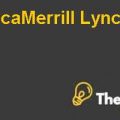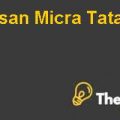Problem Statement:
How could Heinz utilize its unused capacity, and increase its presence into the market, and rise as market leader in terms of products, customer, and production? Would acquisition of Beech-Nut provide competitive advantage, and would it be in favor of company that impact of acquisition might make market anti-competitive, and could Heinz leverage investment after acquisition? This Heinz case study is about how the baby food industry is highly concentrated between three competitors. The argument is made that a merger between Heinz and Beech-Nut would make the baby food industry as anti-competitive by limiting the competition between the two companies. The Federal Trade Commission (FTC) has blocked the merger and now the merger has been dissolved. The FTC has measured some drawbacks of the merger on the industry, and in contrast on the synergies. The United States’ baby food industry in 2000 was about $865 million to $1 billion dollars. This was divided up between three companies.
Gerber, which is the market leader with a market share of 65%,its products are being sold nearly to 90% of all supermarkets (Bay 1). Heinz and Beech-Nut have market shares of 17.4% and 15.4% respectively. Both compete for the extra shelf space behind Gerber and their products are in approximately 40%-45% of all supermarkets. However, their competition is in the wholesale market, but they have no fight in the retail segment of the market given that it is the most diversified segment in the market. However, it can be determined that Heinz has strategic capabilities which Beech-Nut lack. But, the issue for Heinz is to convince and explain the synergetic effect of the merger of two companies. The baby food industry currently, has an HHI score of 4775, indicating that it was already a highly concentrated industry, the post-merger figures would have increased the score by 510 points, and would have ended up with stifle competition. It is certain that merger between two companies would change the mindset of new entrants, because the merger would be anti-competitive. The barriers to entry were already very high as it was, but if this proposed merger was successful, it would further limit any new competitors to the market (Bay 2). The baby food industry was about to have only two major players,this would have established a Duopoly. Heinz and Beech-Nut proclaimed that they were not really competitors at the retail level. They also argued that their customers do not view their products as substitutes. Beech-Nut would typically be found on the shelves for about a penny less than Gerber, maintaining a “value driven” product. Heinz argued that it wasa cost-driven food company and was notcompeting for the same customers that Beech-Nut and Gerber had. There was also an argument made that since Heinz and Beech-Nut do not overlap geographically, this was also indicative that they are not competitors at the retail level and a merger would not make the industry anti-competitive (Bay 3) Heinz and Beech-Nut also proclaimed that they needed to be mergedto enable the companies to innovate and launch new products to compete with Gerber because they lacked sufficient shelf presence (Bay 4)................
This is just a sample partial work. Please place the order on the website to get your own originally done case solution.











